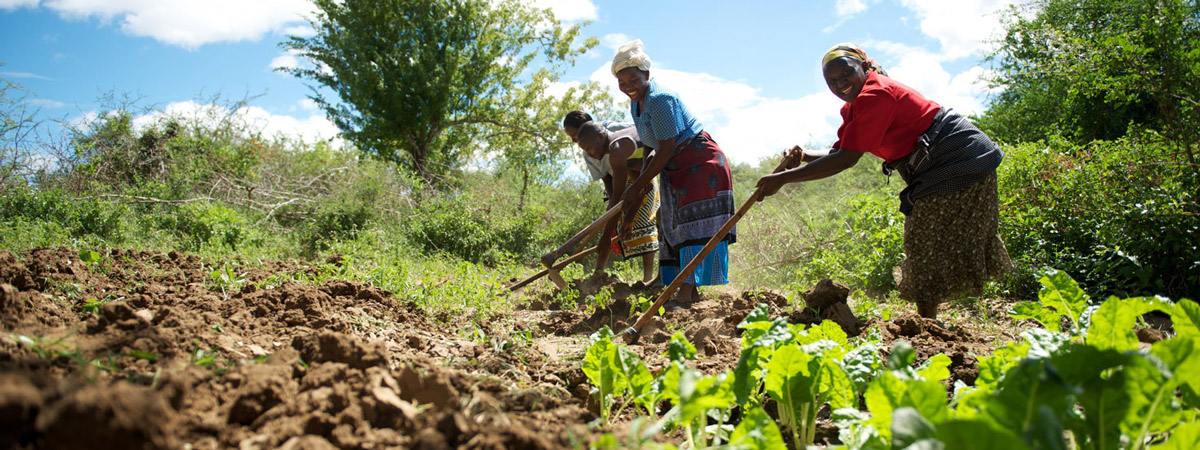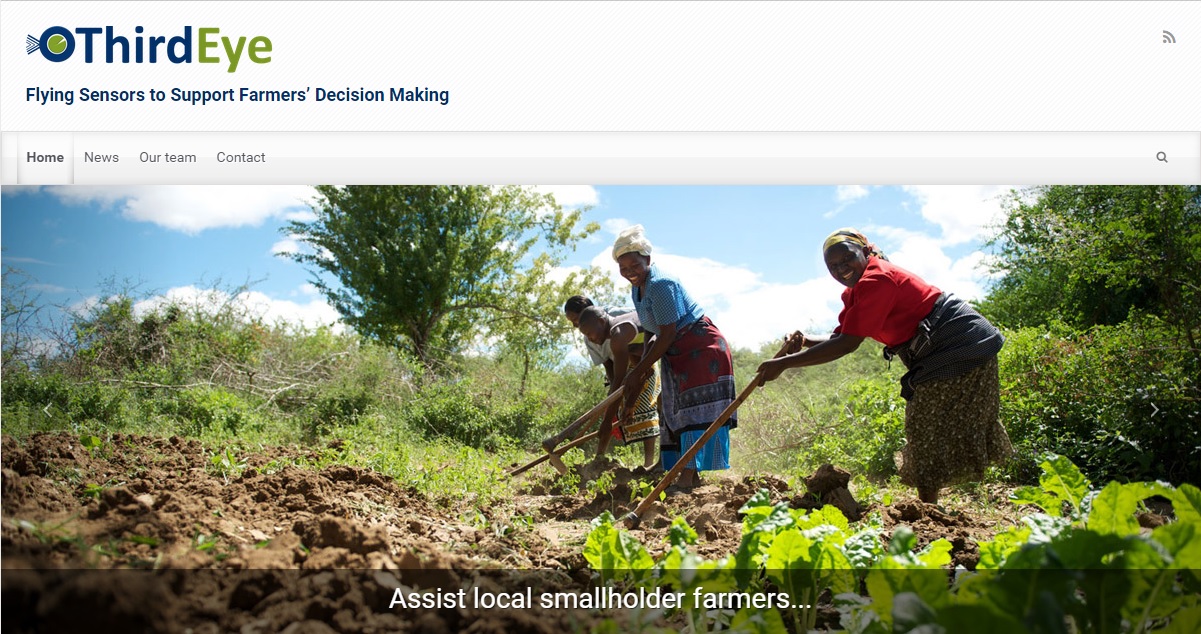Farmers are confronted with a lack of knowledge on where and when to apply their limited resources as water, fertilizer, and seeds. A key factor in enabling an increase and efficiency in food production is providing farmers with relevant information. Such information is needed as farmers have limited resources (seed, water, fertilizer, pesticides, human power) and are always in doubt in which location and when they should supply these resources. Interesting is that especially smallholders, with their limited resources, are in need of this kind of information.
Spatial information from Flying Sensors can be used for this. Flying Sensors offer the opportunity to obtain information outside the visible range and can therefore detect information hidden for the human eye (Third Eye). Nowadays, low-cost sensors in the near-infrared spectrum can detect crop stress about two weeks before the human eye can see this.
The ThirdEye project project supports farmers in Mozambique by setting up a network of Flying Sensors operators. These operators will be equipped with Flying Sensors and tools to analyse the obtained imagery. Flying Sensors have been proven to provide useful information in supporting farmers. However, this project is unique as it is a first trial in a developing country to supply information on a regular base using Flying Sensors.
Recently a special website was launched for the ThirdEye project. Relevant information, up-to-date news, team members and contact information can be found on this site. Please visit the Third Eye project website or contact Peter Droogers (project leader) for more information.
This project is made possible through the support of the Securing Water for Food: a Grand Challenge for Development partners: the United States Agency for International Development (USAID), the Swedish International Development Cooperating Agency (Sida), and the Ministry of Foreign Affairs of the Kingdom of the Netherlands. It was prepared by FutureWater and does not necessarily reflect the views of the Securing Water for Food partners. Further information about Securing Water for Food can be found at www.securingwaterforfood.org.


